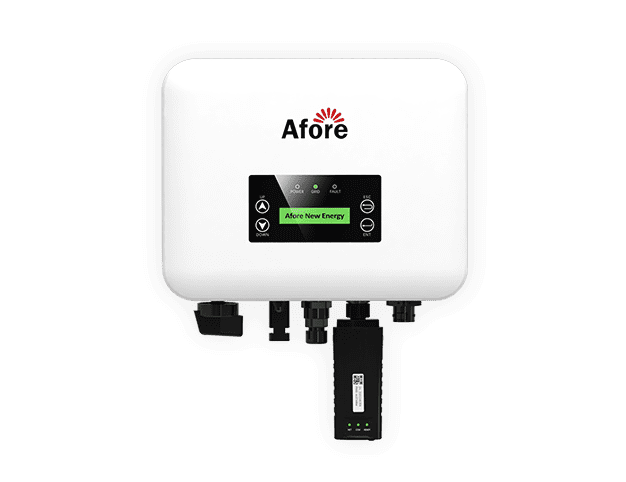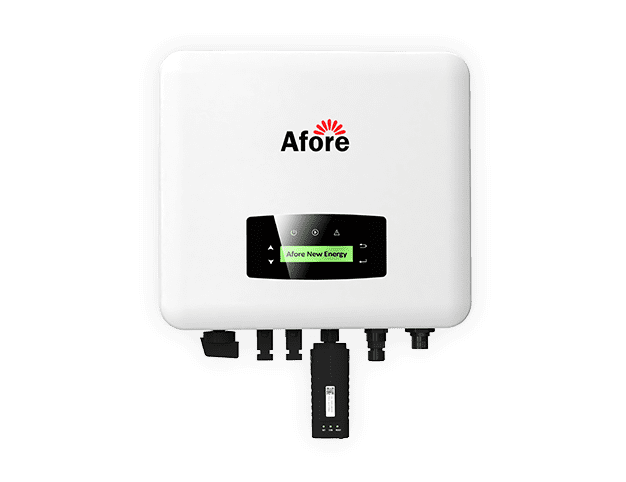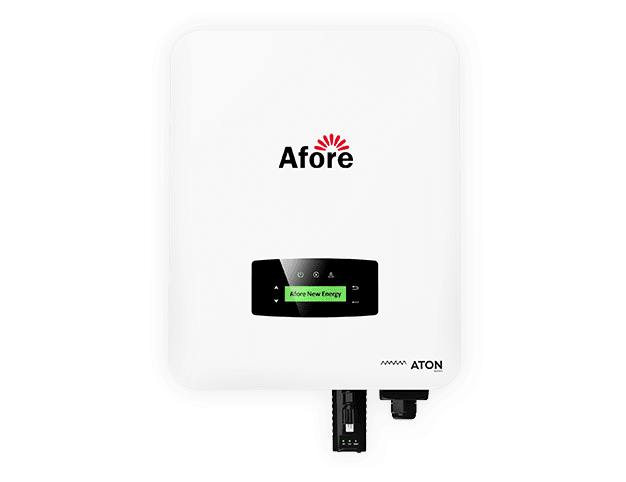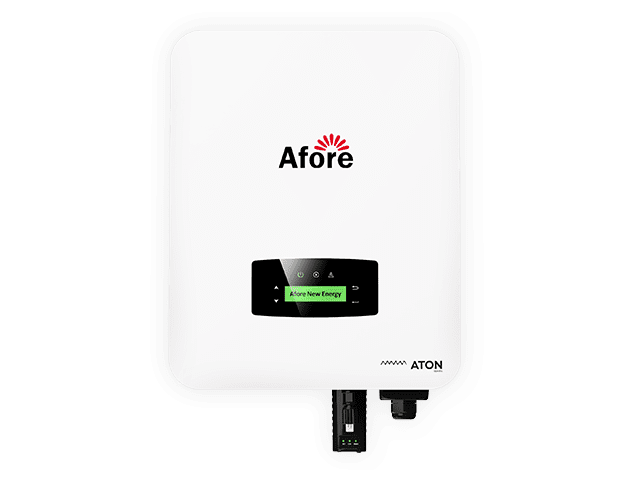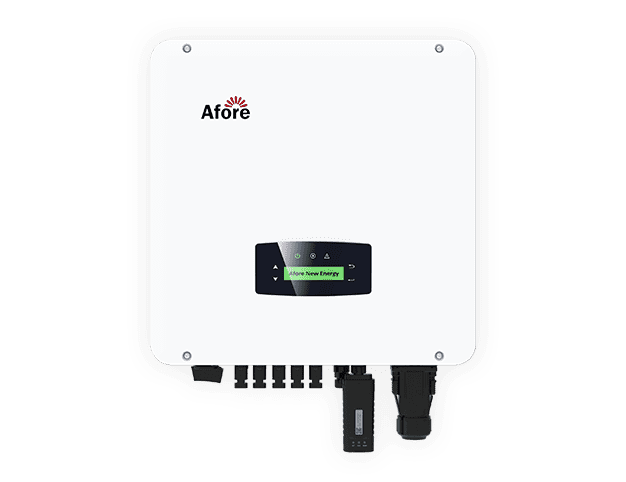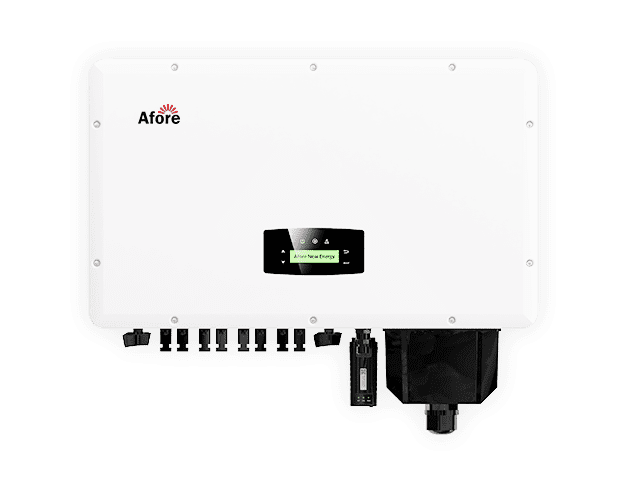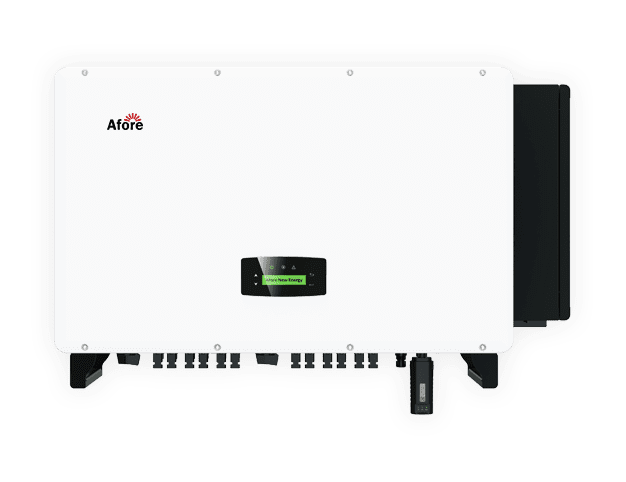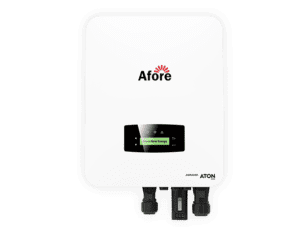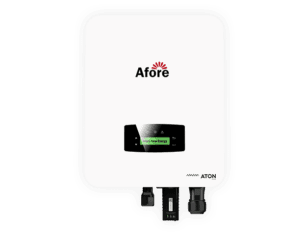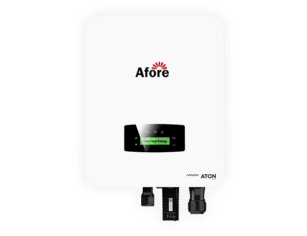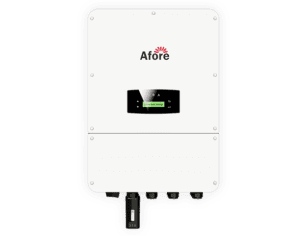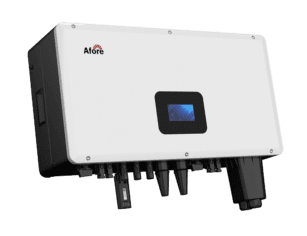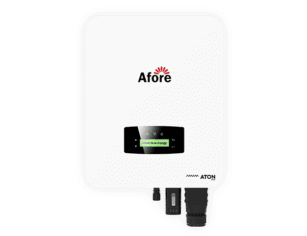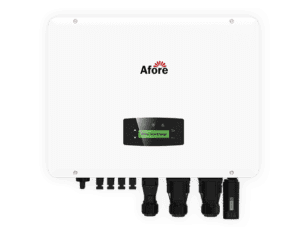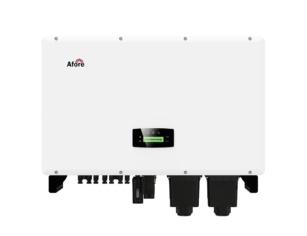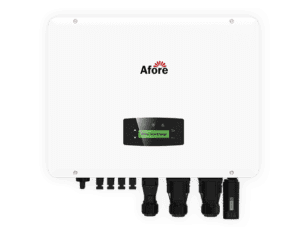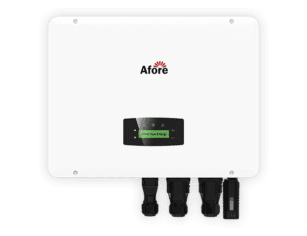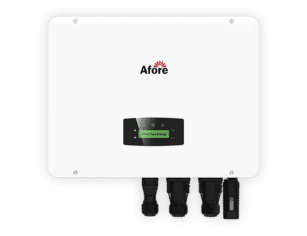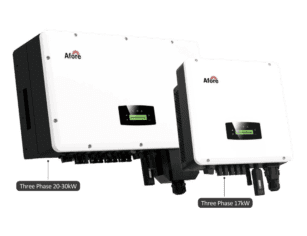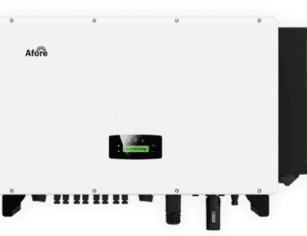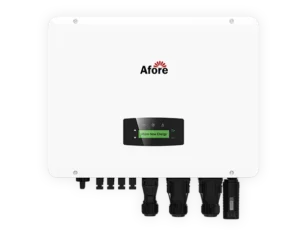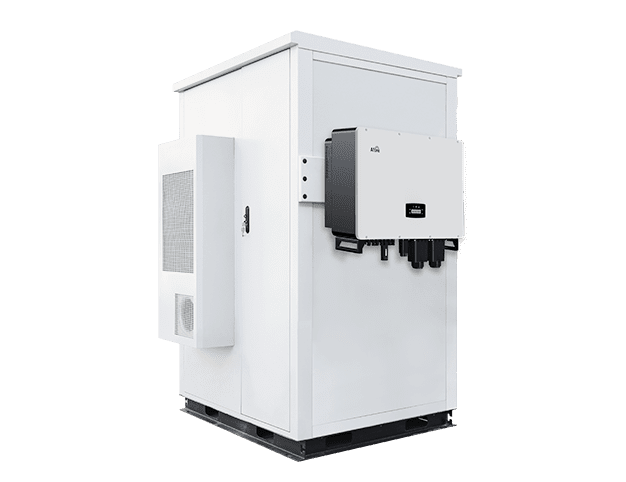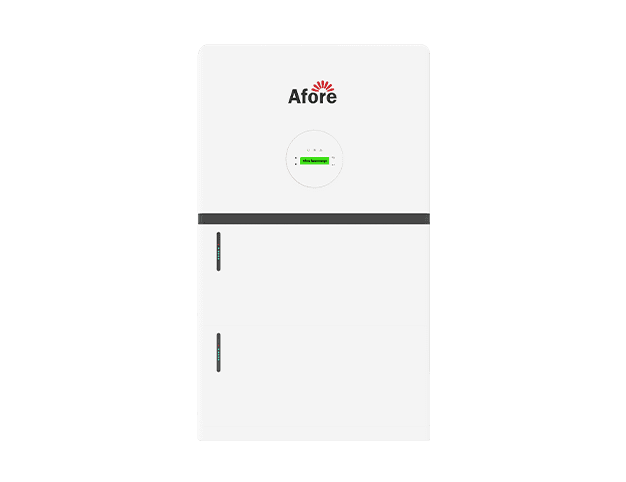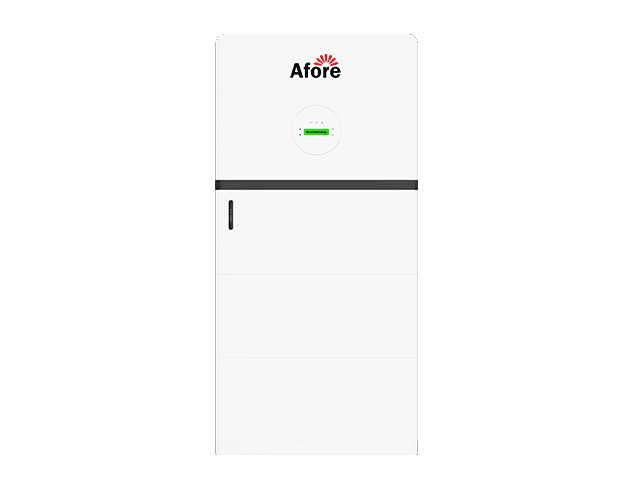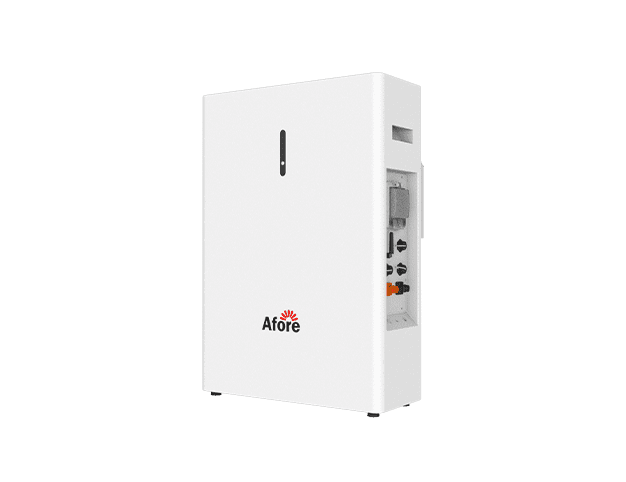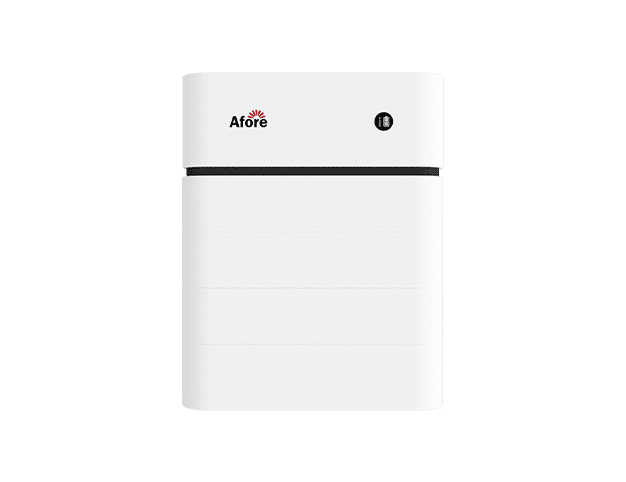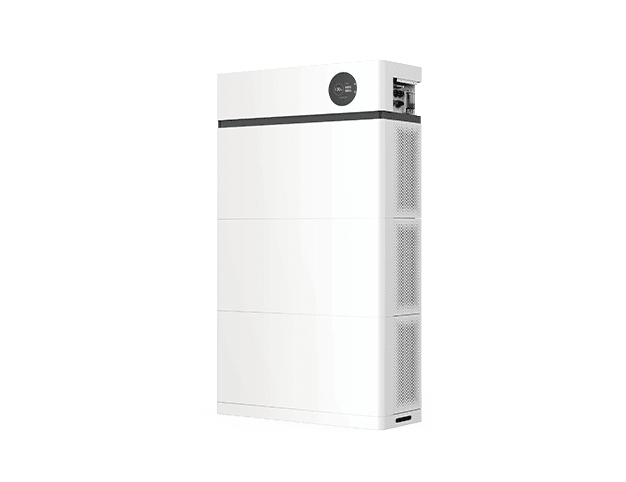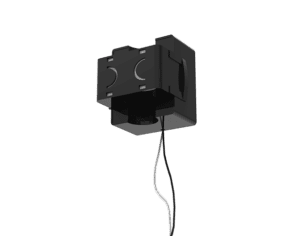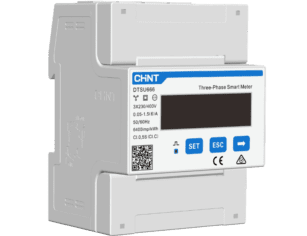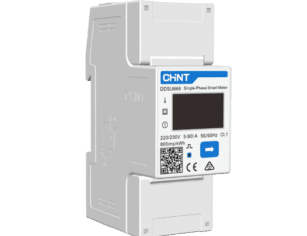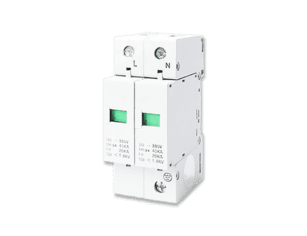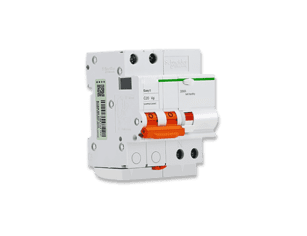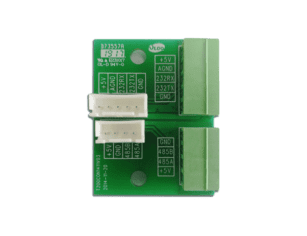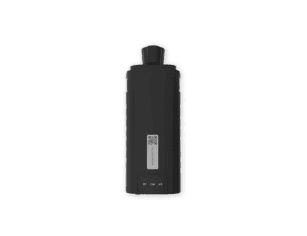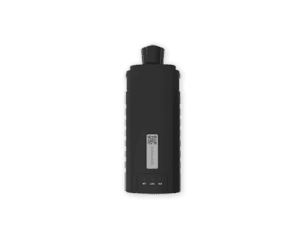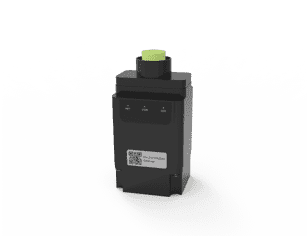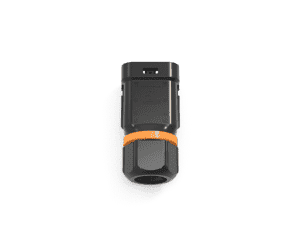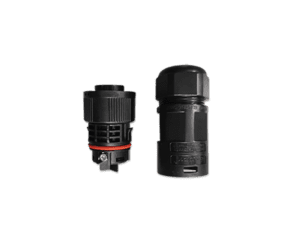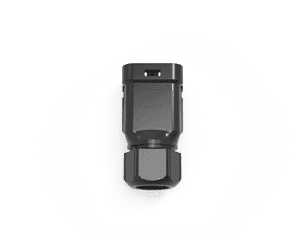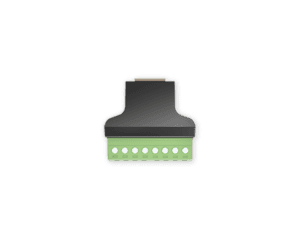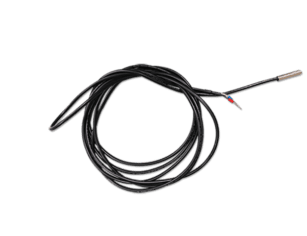Explicação sobre o corte do inversor: Maximize sua produção solar

Índice
Quando proprietários de residências ou empresas instalam energia solar pela primeira vez, um dos termos que frequentemente aparece durante o projeto do sistema é o corte do inversor. Se você já olhou para o seu aplicativo de monitoramento e se perguntou por que o gráfico de produção "se achata" no meio de um dia perfeitamente ensolarado, provavelmente já viu o inversor clipping em ação. Mas o que isso significa, se é prejudicial ao seu inversor solar e o que você pode fazer a respeito?
Este guia abrangente detalha tudo o que você precisa saber sobre o clipping do inversor: o que é, quando é realmente uma coisa boa, como evitá-lo e como identificar se algo mais sério está acontecendo com seu inversor solar. Também abordaremos as perguntas mais frequentes dos proprietários de casas, diretamente das comunidades solares e das instalações do mundo real.
O que é o Inverter Clipping?
Definição de recorte em sistemas solares
Em sua essência, o corte do inversor ocorre quando os painéis solares produzem mais energia CC do que o inversor é capaz de converter em energia CA. Em outras palavras, os painéis estão dizendo: "Aqui estão 6 quilowatts de energia da luz solar", mas o inversor foi projetado para lidar com apenas 5 quilowatts. O resultado? A energia extra é simplesmente "cortada".
Você verá isso em seus gráficos de produção como um platô plano na saída nominal do inversor. Em vez de a curva continuar subindo à medida que a luz solar atinge o pico, a linha é cortada bem na capacidade máxima do inversor.
Por que ocorre o corte
O motivo mais comum para o corte do inversor é um painel solar superdimensionado em relação à classificação do inversor. Os projetistas geralmente constroem sistemas com uma relação CC/CA maior que 1:1. Por exemplo, uma matriz de 7 kW emparelhada com um inversor de 6 kW. Isso é intencional - garante que o inversor opere mais próximo de seu máximo com mais frequência, melhorando a coleta de energia em geral.
As condições ambientais também desempenham um papel importante. Uma manhã de primavera fresca, sem nuvens e com sol forte pode criar as condições perfeitas para que os painéis superem brevemente as expectativas, levando ao corte. A orientação e a inclinação do painel, juntamente com superfícies refletoras próximas, também podem aumentar a saída instantânea.
Tipos de sistemas de inversores solares e comportamento de corte
Diferentes tipos de inversores respondem ao corte de forma diferente:
- Os inversores de string lidam com isso limitando a saída em toda a string.
- Os microinversores podem ser cortados painel por painel, dependendo das condições locais.
- Os otimizadores com um inversor central equilibram a maximização da produção e a permanência dentro dos limites seguros do inversor.
Em todos os casos, o grampo em si não significa que o equipamento está falhando. É um recurso de segurança incorporado.
Ao selecionar um inversor solar, é fundamental considerar a reputação do fabricante e a tecnologia por trás de seus produtos. Por exemplo, Antes oferece uma gama de inversores híbridos projetado para otimizar a eficiência energética e minimizar o corte.
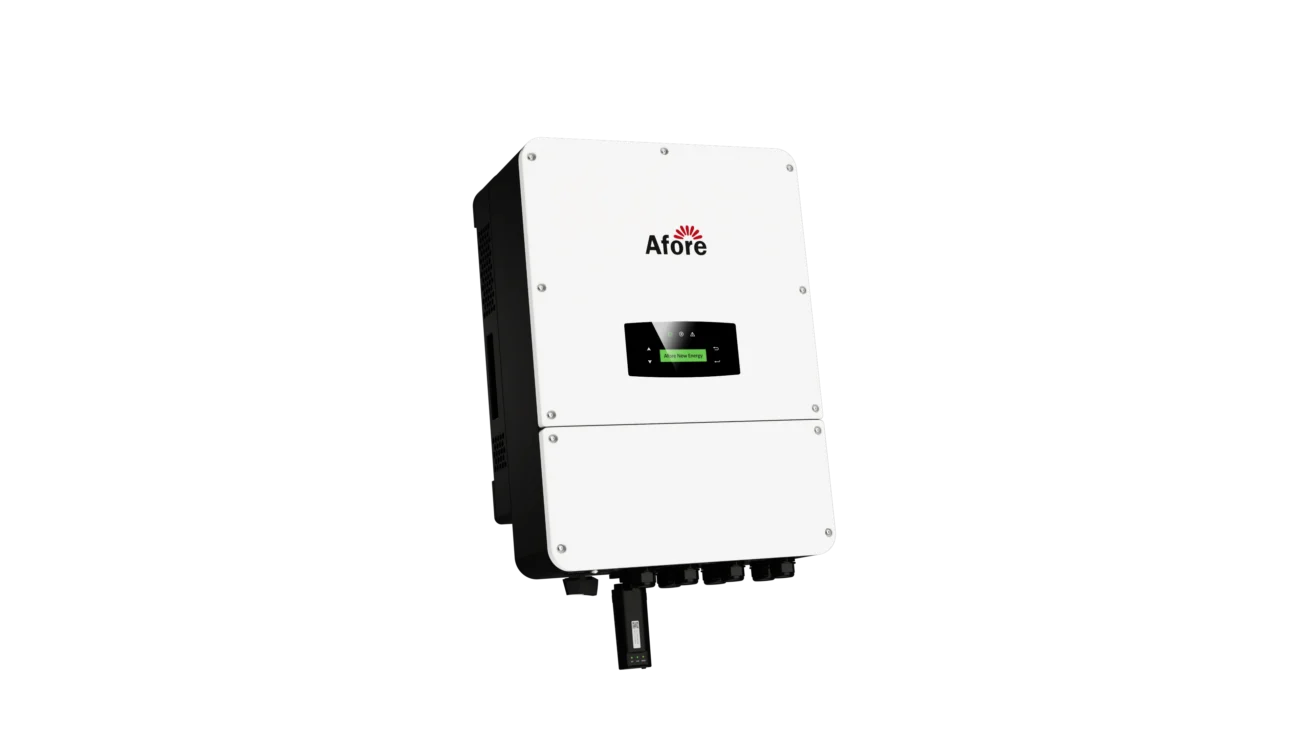
O clipping é ruim para os inversores?
Impacto na longevidade e na garantia do equipamento
Uma preocupação comum entre os proprietários de energia solar é se o corte do inversor coloca um estresse indevido no inversor solar. A resposta tranquilizadora é que o corte, por si só, não danifica o equipamento. Os inversores modernos são projetados com mecanismos de proteção que lhes permitem limitar a saída com segurança sem sobrecarregar os componentes internos.
Pense nisso como o controle de cruzeiro em um carro. Mesmo que você pressione o pedal do acelerador com mais força, o carro não excederá a velocidade definida. Da mesma forma, quando os painéis solares emitem mais energia CC do que o inversor pode suportar, o inversor simplesmente regula o fluxo. Ele não está se esforçando; está mantendo um limite operacional seguro.
Dito isso, podem surgir problemas se o sistema for mal projetado. Os fabricantes publicam as relações CC/CA recomendadas para cada modelo. Manter-se dentro dessas diretrizes garante que o corte seja um evento seguro e esperado. No entanto, se um sistema for superdimensionado muito além das especificações - por exemplo, forçar um inversor de 5 kW com 8 ou 9 kW de painéis -, o inversor poderá ser forçado a operar fora de sua faixa ideal. Nesses casos, a tensão excessiva pode reduzir sua vida útil e até mesmo anular a garantia.
A cobertura da garantia é outra consideração importante. A maioria dos fabricantes declara em suas folhas de dados quais proporções são aceitáveis. Se um instalador configurar um sistema além desses limites e surgirem problemas, o fabricante poderá recusar a cobertura. Os proprietários de residências devem sempre confirmar se a instalação do inversor solar está em conformidade com as recomendações oficiais de projeto do fabricante.
Consequências financeiras e de perda de energia
Embora o corte do inversor seja geralmente inofensivo para o equipamento, ele tem implicações financeiras. Cada quilowatt-hora cortado é um quilowatt-hora que não está alimentando sua casa ou compensando sua conta de eletricidade. Com o tempo, essas pequenas perdas diárias podem se acumular.
Por exemplo, imagine um inversor de 6 kW emparelhado com um painel solar de 7,5 kW. Em alguns dias claros de verão, você pode perder de 2 a 3% de sua energia potencial devido ao corte. Ao longo de um ano, isso pode significar que dezenas de quilowatts-hora nunca chegarão à sua casa ou à rede elétrica. Se a sua concessionária lhe der créditos generosos pela energia exportada, essa perda poderá representar um impacto financeiro considerável.
No entanto, há um outro lado da história. O superdimensionamento do arranjo de CC geralmente aumenta a produção anual em geral, mesmo depois de considerar o corte. Uma matriz maior mantém o inversor funcionando mais próximo do máximo durante as manhãs, as tardes e as condições nubladas, gerando mais energia fora da janela de pico de corte. A pequena perda de energia ao meio-dia pode ser compensada por rendimentos mais altos durante o resto do ano.
O segredo é o equilíbrio. O superdimensionamento insuficiente deixa a energia potencial sem ser aproveitada, enquanto o superdimensionamento excessivo leva ao corte crônico e ao desperdício de geração. O projeto inteligente do sistema atinge o ponto ideal - maximizando o retorno sobre o investimento e mantendo o corte dentro de limites aceitáveis.
Quando o recorte do inversor é bom (ou aceitável)?
Compensações no projeto do sistema
À primeira vista, a ideia de desperdiçar deliberadamente a energia solar parece contraintuitiva. Por que alguém projetaria um sistema que conscientemente corta a produção potencial? A resposta está no equilíbrio entre custo e desempenho. Em muitos casos, uma pequena quantidade de corte do inversor não é apenas aceitável, mas de fato benéfica.
Eis o motivo: os painéis solares raramente operam em seu máximo absoluto por muito tempo. As condições do mundo real - calor, poeira, sombreamento e ângulos imperfeitos do sol - significam que os painéis geralmente produzem menos do que sua capacidade nominal. Ao superdimensionar ligeiramente a matriz em comparação com o inversor solar, os proprietários de imóveis garantem que o inversor atinja sua produção total de forma mais consistente ao longo do dia.
Por exemplo, a combinação de um inversor de 6 kW com 7,5 kW de painéis pode causar cortes por uma ou duas horas em dias perfeitos de verão. Mas durante as manhãs, finais de tarde e dias nublados, a capacidade extra mantém o sistema produzindo próximo ao máximo. Ao longo de um ano, o ganho em energia geral pode superar em muito as poucas horas de perdas por corte.
Outro fator importante é o custo. Os inversores maiores são significativamente mais caros. Ao aceitar uma quantidade modesta de recorte do inversor, os proprietários podem economizar nos custos iniciais do equipamento e, ao mesmo tempo, obter fortes retornos a longo prazo. Essa abordagem de projeto, muitas vezes chamada de "superdimensionamento de CC", tornou-se um padrão do setor em muitas regiões.
Situações em que o recorte causa pouco dano
Há também muitos cenários em que o recorte do inversor tem um impacto mínimo ou desprezível:
- Raras condições de pico: O corte só ocorre em condições perfeitas - luz solar intensa, temperaturas frias e orientação ideal do painel. Em muitos climas, essas condições são limitadas a apenas algumas horas por ano.
- Degradação do painel ao longo do tempo: os painéis solares perdem naturalmente a eficiência, normalmente em torno de 0,5% por ano. Um sistema que sofre um pequeno corte nos primeiros anos terá menos cortes à medida que os painéis envelhecem, o que significa que o projeto se torna mais equilibrado com o tempo.
- Layouts de painéis distribuídos: Os sistemas com painéis voltados para o leste e o oeste, em vez de todos voltados para o sul, geralmente apresentam picos menores ao meio-dia e produção estendida pela manhã e à noite. Isso achata a curva e reduz o recorte.
- Prioridades de autoconsumo: Se sua residência usa mais eletricidade de manhã e à noite, o corte no meio do dia é menos importante. O sistema ainda fornece energia quando você mais precisa dela.
Em resumo, o recorte nem sempre é o vilão que parece ser. Quando projetado adequadamente, é um compromisso calculado que torna a energia solar mais econômica e eficiente. Para a maioria dos proprietários de residências, um pequeno grau de recorte do inversor é simplesmente parte de uma estratégia solar otimizada - não um sinal de investimento desperdiçado ou de inversor solar com defeito.
Como evitar ou atenuar o corte do inversor
Dimensionamento adequado do inversor em relação ao painel solar (relação CC/CA)
A maneira mais eficaz de manter o corte do inversor sob controle é combinar cuidadosamente o seu painel solar com a capacidade do inversor solar. Essa relação é conhecida como relação CC/CA. Uma proporção de 1:1 (por exemplo, um arranjo de 6 kW emparelhado com um inversor de 6 kW), em teoria, eliminaria completamente o corte.
Mas, na prática, a maioria dos instaladores recomenda um pequeno superdimensionamento, geralmente entre 1,1 e 1,25. Isso significa que um inversor de 6 kW pode ser combinado com painéis de 6,6 a 7,5 kW. Essa abordagem atinge um equilíbrio: capacidade extra suficiente do painel para aumentar a produção durante condições abaixo das ideais, sem causar cortes excessivos durante as horas de pico de luz solar.
O superdimensionamento além desses limites, no entanto, pode criar um corte crônico. Além de perder mais de sua geração potencial, você também pode operar o inversor fora das especificações recomendadas pelo fabricante, o que pode afetar sua garantia. Qual é a conclusão? Projete o sistema dentro de proporções seguras e aprovadas pelo setor para manter o corte sob controle e, ao mesmo tempo, maximizar a produção anual.
Layout do sistema e orientação do painel
O projeto do sistema vai além da capacidade. A forma como os painéis são dispostos no telhado também pode influenciar o corte. Quando todos os painéis estão voltados para o sul com a inclinação perfeita, você verá um pico acentuado ao meio-dia - horário ideal para o corte do inversor. Mas se você distribuir seus painéis em várias orientações, como leste e oeste, a curva de potência se achatará.
Esse perfil de produção escalonado reduz os picos acentuados e estende a geração para o período da manhã e da noite. Como resultado, o inversor lida com uma carga mais estável e o corte se torna menos pronunciado.
Outra estratégia é projetar com o gerenciamento de sombra em mente. Se você souber que certas partes da matriz ficarão sombreadas durante os horários de pico, poderá planejar com otimizadores ou microinversores. Embora o sombreamento não seja o ideal de modo geral, ele reduz naturalmente a chance de corte ao meio-dia, diminuindo os picos de saída.
Uso de baterias ou armazenamento de energia
O armazenamento de energia também pode ser uma maneira inteligente de capturar a eletricidade que, de outra forma, seria perdida devido ao corte do inversor. Com um sistema de bateria com acoplamento CC, o excesso de energia CC dos painéis pode ser armazenado antes de chegar ao inversor. Isso permite que você economize a energia cortada e a utilize mais tarde, à noite, quando a demanda doméstica aumenta.
Os sistemas de bateria com acoplamento CA não evitam o corte da mesma forma, mas ainda podem armazenar o excesso de energia depois que ela passa pelo inversor solar. Embora não seja tão eficiente, essa configuração ainda aumenta o autoconsumo e reduz a dependência da rede.
A adição de armazenamento também faz sentido do ponto de vista financeiro em áreas com faturamento por tempo de uso. A eletricidade armazenada durante as horas de sol pode compensar as caras tarifas noturnas, ajudando a transformar o que teria sido energia perdida em economia direta.
Monitor, firmware e manutenção regular
Até mesmo o sistema mais bem projetado se beneficia do monitoramento e da manutenção regulares. Muitos proprietários de energia solar não percebem o corte do inversor até verificarem seus gráficos de produção. Um platô plano na capacidade máxima do inversor é um indicador claro. Ao acompanhar esses dados mensalmente, você verá rapidamente se o corte é mínimo e esperado - ou se aponta para uma possível falha de projeto.
Manter seu inversor atualizado com o firmware mais recente também é importante. Os fabricantes frequentemente lançam atualizações para melhorar a eficiência, a segurança e a compatibilidade com a rede elétrica. Essas atualizações podem ajudar o inversor a lidar com variações de forma mais suave, reduzindo potencialmente o impacto do corte.
Por fim, não se esqueça da manutenção de rotina. Certifique-se de que o inversor solar esteja adequadamente ventilado, especialmente em climas quentes, onde o superaquecimento pode exagerar comportamentos semelhantes a cortes ou causar desligamentos. Limpe os painéis, verifique as conexões e agende inspeções profissionais periódicas para manter o sistema funcionando com desempenho máximo.
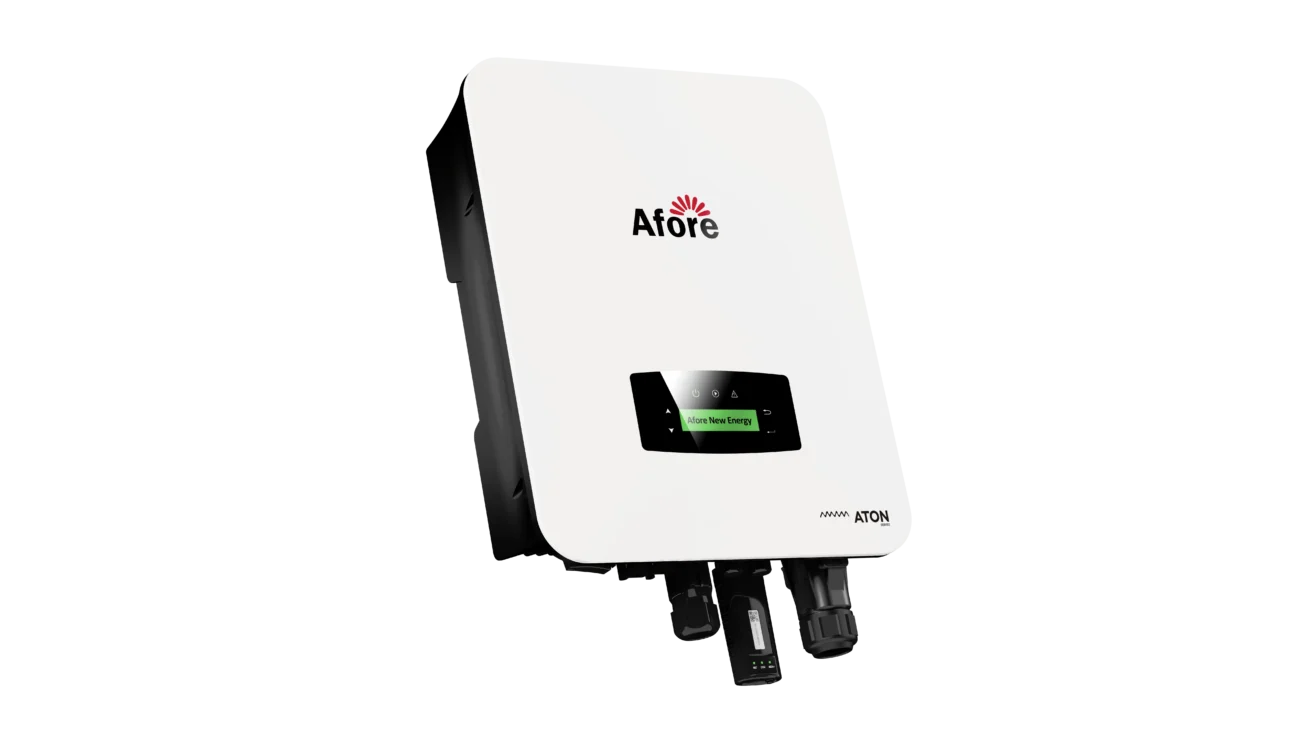
Outros problemas relacionados: Desligamentos, falhas e sinais de problemas do inversor
Por que meu inversor continua cortando / Por que meu inversor desliga?
Às vezes, os proprietários confundem o corte com o desligamento do inversor. Se o seu inversor continuar desligando, pode ser isso:
- Superaquecimento
- Tensão ou frequência da rede fora da faixa permitida
- Falha de componente interno
- Fiação defeituosa ou conexões soltas
Ao contrário do corte, que simplesmente limita a saída, os desligamentos geralmente apontam para um problema que precisa de atenção.
Diferença entre recorte e mau funcionamento
Aqui está a principal distinção: o corte é esperado e projetado no sistema. Um mau funcionamento envolve códigos de erro, queda repentina para zero de saída ou ciclos irregulares de ligar e desligar.
Sinais de alerta precoce de que seu inversor solar está com defeito
Fique de olho:
- Uma queda acentuada na produção diária em comparação com o desempenho histórico
- Códigos de falha ou mensagens de advertência frequentes
- Operação ruidosa ou zumbido incomum
- A tela fica em branco ou os LEDs piscam irregularmente
- Superaquecimento ou cheiro de queimado
Isso pode indicar que o inversor solar está chegando ao fim de sua vida útil.
Estudos de caso / exemplos reais
Embora o corte do inversor muitas vezes pareça um conceito técnico restrito a manuais de projeto, na realidade, ele ocorre todos os dias em telhados e fazendas solares em todo o mundo. A análise de casos reais ajuda os proprietários de residências e empresas a entender quando o clipping é aceitável, quando ele se torna um problema e como o planejamento inteligente pode transformá-lo em um problema.
Estudo de caso 1: Telhado residencial com recorte leve
Um proprietário de casa em Sydney instalou um inversor solar de 6 kW emparelhado com uma matriz solar de 7,2 kW. No papel, o sistema estava superdimensionado e o instalador alertou que poderia ocorrer um corte durante os picos do meio-dia.
Os dados de produção mostraram exatamente isso: entre 11h e 14h em dias ensolarados de primavera, a produção se estabilizou no limite de 6 kW do inversor. Mas durante todo o ano, o corte foi responsável por menos de 2% da geração total. As pequenas perdas do meio-dia foram mais do que compensadas pela produção mais forte da manhã e do final da tarde.
Lição: O superdimensionamento moderado pode aumentar a energia anual total, mantendo o corte mínimo. Para os proprietários de casas, essa é geralmente a estratégia mais econômica.
Estudo de caso 2: Edifício comercial de escritórios com grande superdimensionamento
Um edifício comercial na Califórnia instalou um inversor solar de 50 kW com 70 kW de painéis para maximizar o espaço no telhado. Embora esse projeto parecesse bom no papel, o inversor atingia seu limite quase diariamente durante os horários de pico.
As perdas por corte foram estimadas em quase 10% por ano - muito mais do que o esperado. A empresa ainda economizou nas contas de eletricidade, mas o retorno do investimento foi menor do que o projetado devido ao desperdício de geração.
Para corrigir o problema, a empresa adicionou um sistema de bateria que absorveu grande parte da energia cortada. Isso permitiu que eles usassem a energia armazenada à noite, reduzindo as cobranças de demanda e aumentando o desempenho geral do sistema.
Lição: O superdimensionamento agressivo pode ser um tiro no pé, a menos que seja combinado com armazenamento ou gerenciamento avançado de carga.
Estudo de caso 3: Casa rural com orientação de painel leste-oeste
Um proprietário rural na Alemanha enfrentou um desafio único: espaço limitado no telhado voltado para o sul. Seu instalador colocou metade dos painéis no telhado leste e metade no oeste. O sistema usou um inversor solar de 5 kW com 6 kW de painéis.
O resultado? Os painéis voltados para o leste aumentaram a produção pela manhã, a matriz voltada para o oeste levou a produção para a noite e o pico do meio-dia nunca sobrecarregou o inversor. Raramente ocorriam cortes e o sistema mantinha uma curva de produção suave.
Lição: O design inteligente do layout pode reduzir significativamente o recorte sem aumentar os custos.
Estudo de caso 4: parque solar em escala de utilidade pública com recorte intencional
Em uma fazenda de energia solar em escala de serviços públicos no Arizona, os desenvolvedores superdimensionaram deliberadamente a matriz em quase 40% em comparação com a capacidade do inversor. Seu raciocínio era simples: os painéis produzem muito abaixo de sua capacidade nominal na maior parte do ano devido ao calor, à poeira e às condições abaixo do ideal.
Sim, o corte ocorria regularmente durante os dias mais claros e frios. Mas os dados de produção anual confirmaram que a estratégia funcionou - a produção total de energia foi muito maior do que se eles tivessem dimensionado a matriz para corresponder aos inversores. O ligeiro corte ao meio-dia foi mais do que compensado pela geração mais forte em condições fora do horário de pico.
Lição: Em escala, o recorte do inversor pode ser uma escolha estratégica de projeto que maximiza os retornos de longo prazo.
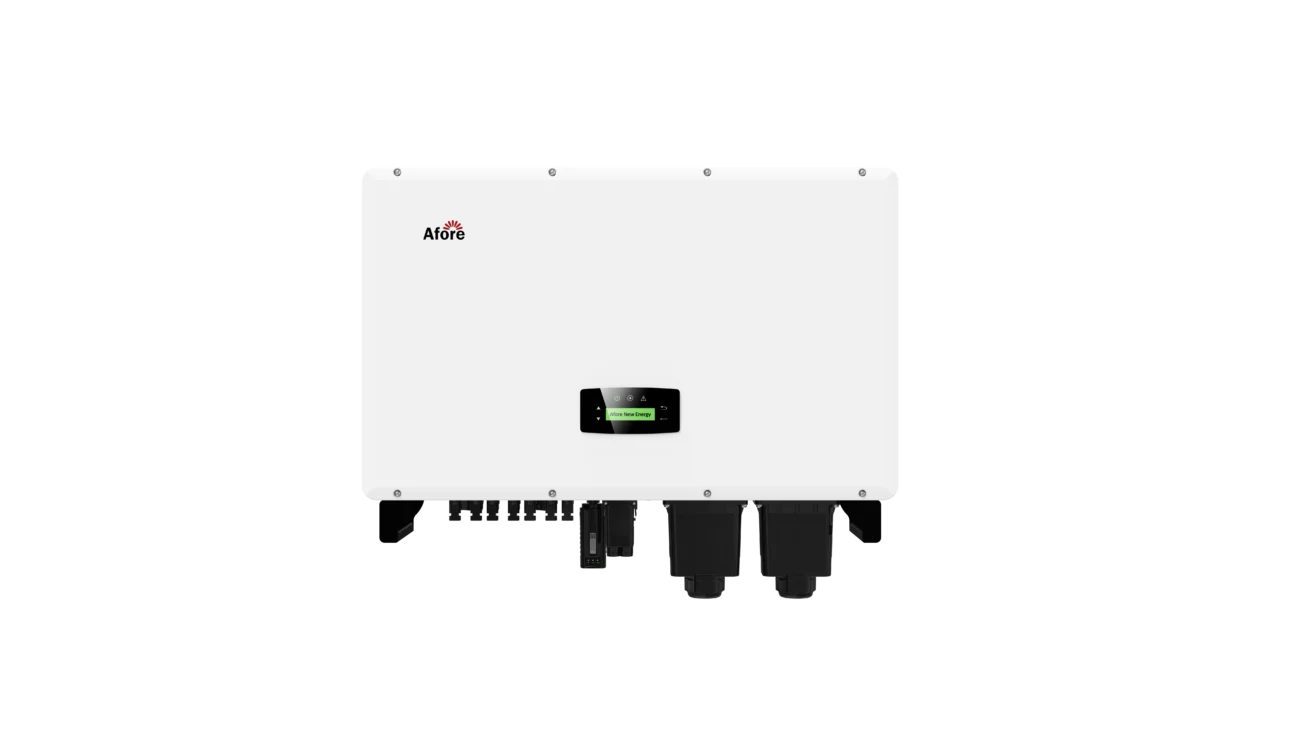
Práticas recomendadas e recomendações (para proprietários / instaladores)
Lista de verificação do projeto antes da instalação
A melhor maneira de gerenciar o corte do inversor é evitar erros graves de projeto desde o início. Tanto os proprietários quanto os instaladores devem seguir uma lista de verificação clara antes da instalação:
- Confirme a relação CC/CA - Atenha-se aos limites de superdimensionamento aprovados pelo fabricante. Um ligeiro superdimensionamento (normalmente até 25%) é bom e até benéfico, mas o superdimensionamento excessivo leva a perdas desnecessárias de corte.
- Corresponder às metas do sistema - Se sua prioridade for maximizar a produção anual, um pequeno corte é aceitável. Se você quiser todos os quilowatts-hora possíveis, considere um inversor solar maior ou adicione armazenamento.
- Considere a orientação do painel - O uso de uma combinação de painéis voltados para o leste e para o oeste pode suavizar a produção, reduzindo os picos acentuados do meio-dia e limitando o recorte.
- Analise as condições da garantia - Os fabricantes geralmente especificam as proporções máximas permitidas. O superdimensionamento além dessas diretrizes pode comprometer a cobertura em caso de falha do inversor.
- Orçamento para o futuro - Se o armazenamento da bateria estiver em seu plano de longo prazo, projete com isso em mente. Isso pode mudar a forma como você equilibra a capacidade do painel e do inversor.
Seguindo essas etapas, os instaladores podem projetar sistemas que mantenham o corte do inversor em um nível aceitável e, ao mesmo tempo, ofereçam excelente desempenho e retorno financeiro.
Manutenção operacional
Mesmo após uma instalação bem projetada, a manutenção do sistema desempenha um papel importante no gerenciamento da eficiência. A manutenção adequada não só garante que o inversor solar opere com segurança, mas também ajuda a detectar problemas que possam se assemelhar a um corte ou exagerar seu impacto.
- Monitore os dados de produção: Procure linhas planas na saída máxima do inversor. Alguns cortes são normais, mas platôs prolongados em momentos inesperados podem indicar um problema no projeto ou no equipamento.
- Mantenha os painéis limpos: A poeira e a sujeira reduzem a geração, o que, ironicamente, reduz o corte, mas também reduz o rendimento total de energia. Painéis limpos significam desempenho ideal.
- Garanta a ventilação adequada: O superaquecimento pode fazer com que os inversores reduzam a saída ou desliguem, imitando o corte de energia. Mantenha o fluxo de ar livre ao redor do inversor, especialmente em climas quentes.
- Aplicar atualizações de firmware: Os fabricantes lançam atualizações que melhoram o desempenho do inversor e a conformidade com a rede. Manter-se atualizado mantém seu sistema funcionando sem problemas.
Um pouco de cuidado proativo ajuda muito a evitar quedas de desempenho que podem mascarar ou piorar o corte do inversor.
Quando consultar profissionais / Substituir o inversor
Às vezes, mesmo com um projeto cuidadoso e manutenção regular, surgem problemas. É importante saber quando o corte é apenas parte da operação normal e quando é um sintoma de algo mais sério.
- Desligamentos frequentes: Se o inversor solar parar e iniciar repetidamente, isso não é um corte - pode indicar superaquecimento, problemas na rede ou falhas internas.
- Ruído incomum ou códigos de erro: Os inversores modernos fornecem códigos de diagnóstico. Se você vir mensagens de erro repetidas, consulte o instalador ou o fabricante.
- Recortes excessivos além das expectativas: Se seus dados de produção mostrarem perdas muito acima das projeções do instalador, talvez seja hora de fazer uma avaliação profissional.
- Fim da garantia/vida útil: A maioria dos inversores dura de 10 a 15 anos. Se o seu estiver atingindo essa idade e apresentando problemas de desempenho, a substituição pode ser mais econômica do que o reparo.
Em resumo, o corte do inversor em si é geralmente inofensivo. Mas quando você notar desligamentos persistentes, comportamento anormal ou perdas que não estejam de acordo com o projeto do sistema, é hora de chamar um técnico qualificado em energia solar. A solução precoce dos problemas protege seu investimento e sua independência energética.
Considerações finais
O corte do inversor pode parecer um problema, mas geralmente é apenas parte de um projeto solar inteligente. Uma pequena quantidade de corte não danifica seu inversor solar e pode, na verdade, melhorar seu retorno sobre o investimento. O segredo é o equilíbrio: não superdimensione sua matriz a ponto de desperdiçar energia diariamente, mas não a sub-dimensione a ponto de seu inversor raramente atingir seu nível máximo.
Ao monitorar seu sistema, manter a manutenção em dia e trabalhar com instaladores experientes, você pode garantir que seu investimento em energia solar forneça energia confiável e eficiente por décadas.
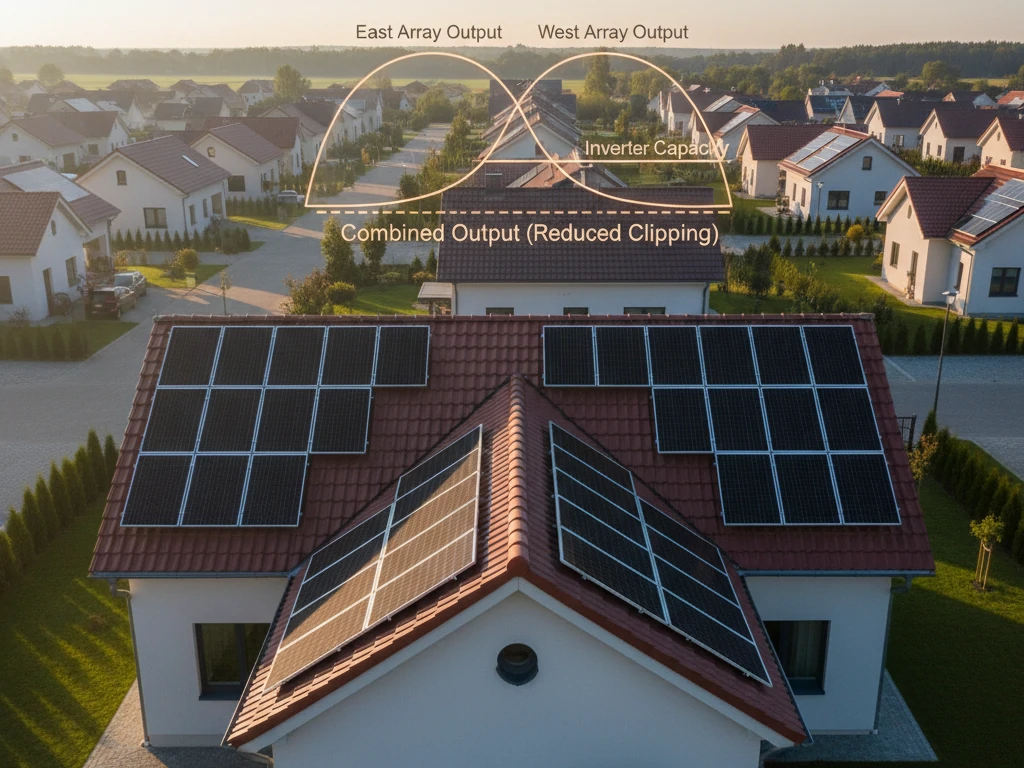
Perguntas frequentes
-
O corte é ruim para os inversores?
Não, o corte do inversor não é prejudicial ao próprio inversor solar. Os inversores são projetados com proteções integradas que limitam a saída com segurança. Pense nisso como o controle de cruzeiro de um carro - não importa quanta energia os painéis forcem, o inversor não excederá sua classificação máxima. A única "perda" é na geração potencial de energia, não em danos ao equipamento.
-
Como evitar o corte do inversor?
Você pode reduzir o corte do inversor dimensionando adequadamente o seu sistema. Isso significa manter seu painel solar e o inversor solar dentro das relações CC/CA recomendadas (geralmente em torno de 1,1 a 1,25). A orientação inteligente do painel, o uso de layouts leste-oeste e a adição de armazenamento de bateria são outras estratégias que ajudam a minimizar o corte.
-
Por que o recorte solar é bom?
Um pequeno corte do inversor pode, na verdade, ser uma coisa boa. O superdimensionamento de seus painéis solares em comparação com o inversor significa que seu sistema produz mais energia durante as manhãs, as noites e o tempo nublado. Mesmo que alguma energia seja cortada ao meio-dia, a produção anual total geralmente é maior, tornando o investimento mais lucrativo.
-
Por que meu inversor continua desligando?
Se o seu inversor solar apresentar cortes repetidos, geralmente não se trata de um corte. As causas comuns incluem superaquecimento, flutuações na tensão da rede ou falhas internas. O corte aparece como uma linha de produção plana na saída máxima, enquanto os desligamentos significam que nenhuma energia está sendo fornecida.
-
Como saber se um inversor está com defeito?
Os sinais de alerta de um inversor solar com defeito incluem códigos de erro frequentes, ruídos estranhos, desligamentos inesperados ou produção abaixo do normal, mesmo sob sol pleno. Ao contrário do corte normal do inversor, que é previsível e inofensivo, esses sinais sugerem que é hora de chamar um técnico.
-
Por que meu inversor para e inicia repetidamente?
Esse comportamento geralmente indica um problema elétrico ou térmico, e não o corte do inversor. Superaquecimento, conexões soltas ou instabilidade da rede podem fazer com que o inversor ligue e desligue. A manutenção regular e a inspeção profissional são as melhores maneiras de resolver o problema.
-
O corte do inversor desperdiça muita energia?
Não necessariamente. Na maioria dos sistemas, o corte do inversor é responsável por menos de 2-5% da geração anual. A compensação é que os painéis superdimensionados mantêm o inversor produzindo mais energia durante todo o ano, especialmente nos horários fora de pico. As pequenas perdas ao meio-dia geralmente são compensadas pelos ganhos gerais.
-
O corte do inversor pode ser corrigido após a instalação?
Sim, mas isso depende da causa. Se o painel solar for excessivamente grande, as opções incluem adicionar armazenamento de bateria, reconfigurar a orientação do painel ou fazer upgrade para um inversor solar maior. Em muitos casos, porém, o corte é pequeno e não requer intervenção.
-
Como posso saber se meu sistema está cortando?
Verifique seu aplicativo de monitoramento ou os dados do inversor. Se você vir uma linha perfeitamente plana na saída máxima do inversor durante as horas de pico de luz solar, isso significa que o inversor está sendo cortado. Uma curva suave com picos abaixo da classificação do inversor geralmente significa que não está ocorrendo clipping.
-
O recorte anulará minha garantia?
A maioria dos fabricantes permite algum superdimensionamento e aceita a ocorrência de cortes no inversor. Entretanto, ir muito além dos limites de relação CC/CA publicados pode anular a garantia do inversor solar. Sempre confirme se o instalador segue as diretrizes do fabricante.
-
O recorte é o mesmo que perdas de sombreamento?
Não. O corte do inversor ocorre quando os painéis produzem mais energia do que o inversor pode processar. As perdas por sombreamento ocorrem quando árvores, edifícios ou sujeira reduzem o desempenho do painel. O corte é previsível e relacionado ao projeto, enquanto as perdas por sombreamento são ambientais e geralmente irregulares.
-
Devo aumentar o tamanho de meus painéis de propósito?
Sim, dentro do razoável. A prática recomendada do setor é superdimensionar ligeiramente os painéis em relação ao inversor solar. Isso garante uma produção de energia consistente durante todo o ano. Apenas evite ir tão longe que o corte excessivo do inversor prejudique seu retorno sobre o investimento.




